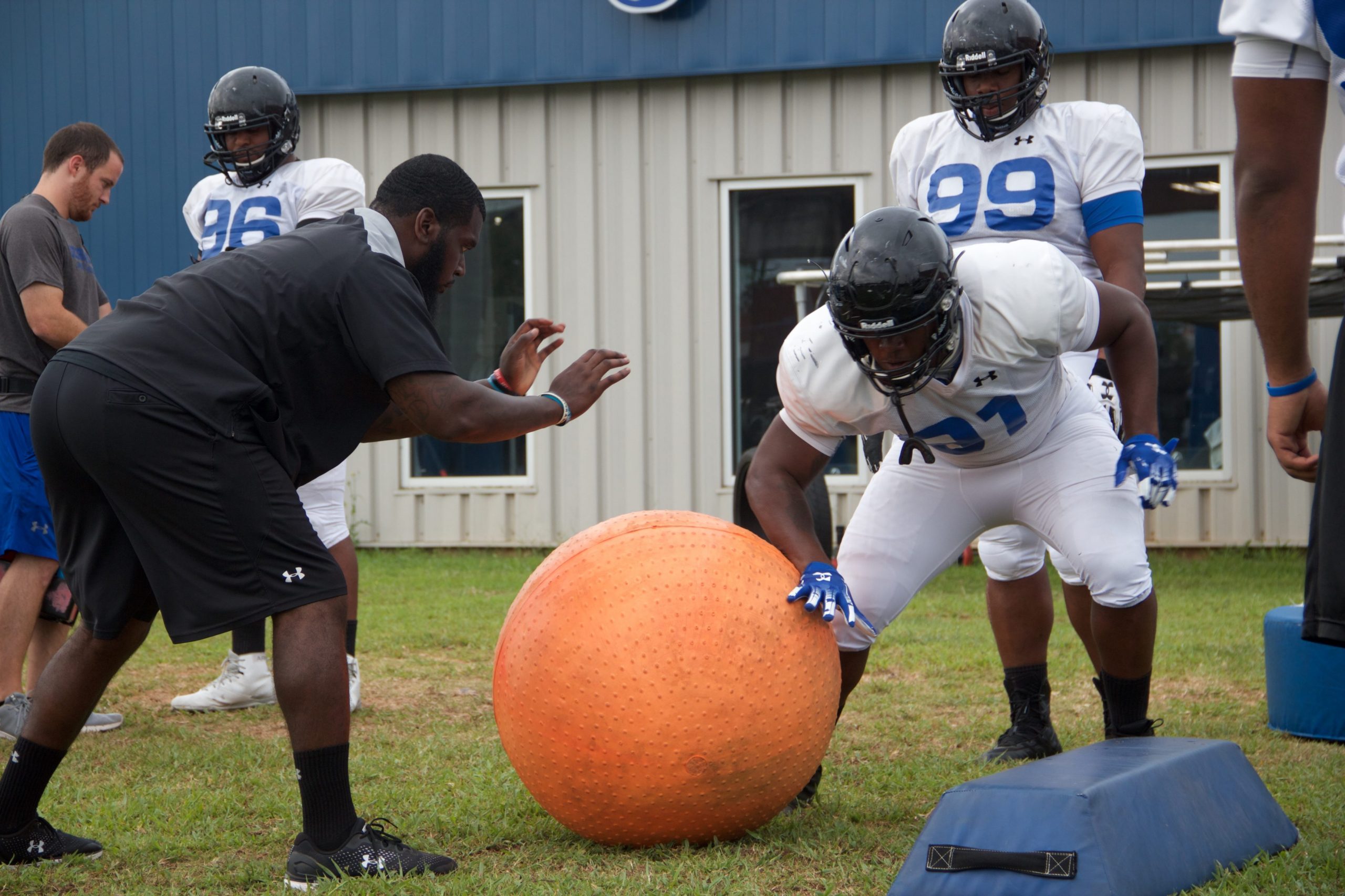
Strength and conditioning is training designed to increase overall performance of athletes through skill development in specific areas like speed, strength, explosiveness, flexibility, stamina and more.
It’s difficult to mark exactly where strength and conditioning began in history with records of strength training tracing back to 3600 B.C., according to Webster. Its presence in modern sports is undeniable with almost every high school, college and professional team having at least one strength and conditioning coach.
In the 1960s and early 1970s, strength and conditioning as a practice began to gain more recognition. Heavy weightlifting was originally seen as detrimental to athletes’ health, but after several teams that employed coaches, like Alvin Roy, who required lifting won championships, the reputation of strength training changed. Roy, a firm believer in using weights, was part of four championships from 1958 to 1972: one at Louisiana State, one in the AFL and two more in the NFL.
IS STRENGTH TRAINING JUST WEIGHTLIFTING?
No, not at all. Heavy weightlifting is often the image associated with strength and conditioning but this is inaccurate.
Michael Zweifel, strength and conditioning coach for the University of Dubuque, spoke with The New York Times about this perspective.
“The act of strength and conditioning, exercise physiology, biomechanics, it’s very complex and intricate. Instead, we give it this simplistic view of more, more, more, and heavier, heavier, heavier,” Zweifel said.
TRAINING MUST BE SPECIALIZED
The needs for each player are different depending on the sport and skill set. Even different positions in the same sport will train differently.
For example, when training a college basketball team, coaches don’t want to overdo it with heavy weights because the extra muscle mass limits players who thrive using speed and agility. Basketball players need to change direction quickly and make explosive jumps, so developing leaner muscles is beneficial for their sport.
On the contrary, soccer typically has training regiments that are focused on cardiovascular workouts like running and jogging. From a strength and conditioning standpoint, preparation for a soccer season could be further maximized by going beyond just running.
Soccer players also spend a lot of time walking between plays but have quick bursts of action when the ball comes their way. Because of this, a strength trainer may utilize interval training, varying quickly from high to low intensity within each workout.
Strength coaches depend on their knowledge of exercise science to be effective. The all-encompassing approach of a strength and conditioning coach is what sets them apart from other members of the athletic staff.
HEALTH AND SAFETY
Strength and conditioning coaches also have an important role when it comes to preventing injuries. Part of the job is to strengthen muscles and tendons to make athletes more injury resistant. Getting athletes in shape is only half of the battle, and they also need to remain healthy throughout the season.
A good strength and conditioning coach will also need close ties with the health staff ensuring that the athletes are able to handle the workload. Communication between the athletes, medical and training staffs should be open and constant.
This past June, a 19-year-old University of Maryland football player died from overexertion. Rick Court, the strength and conditioning coach, was the program’s first staff member to resign.
Rest is an important component in training and can’t be overlooked or ignored. Performance is impaired and too many athletes have been hospitalized or even died from a lack of downtime. The body needs time to recover in order to get the most benefits and productivity.
WHEN TO STRENGTHEN AND CONDITION
Opinions on this topic vary and often depend on the specific athlete and their needs. Typically, training is more intense in the offseason and lighter during the season.
Some coaches prefer consistent training throughout the entire year. In professional leagues, many athletes hire their own strength and conditioning trainers to maintain performance during the offseason.
The Signal spoke with former NFL athlete and current high school trainer Marques Ogden to learn more about the role of strength and conditioning in football.
Signal: How did the coaches differ in college from the NFL?
Ogden: Intensity. It’s a whole other realm of elite intensity in the league. Everybody is just so good. Everybody is freakishly strong.
Signal: What makes a good strength and conditioning coach?
Ogden: A coach who can relate to his players, a coach that can develop customized packages for different positions. No positions are going to be the same, no players are really the same. But in college, it’s so hard to get the individual attention because there’s so many guys and just two or three coaches.
Signal: When is the best time to focus on strength and conditioning training: right before the season or after the season?
Ogden: Year-round. In professional sports, it’s year round, so in college sports it should be year-round. If you’re in school on scholarship and you’re trying to keep your scholarship, or if you’re trying to improve to All-Conference, or All-Conference trying to get to All-American, All-American trying to improve to a draft pick … You’ve got to be training every single day. And really maximize the conditioning. You’ve only got four to five years to give to college, and in the NFL, it becomes a full-time job.
